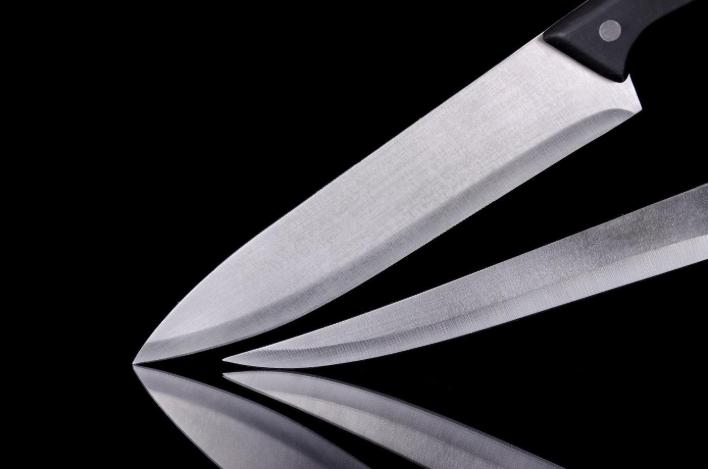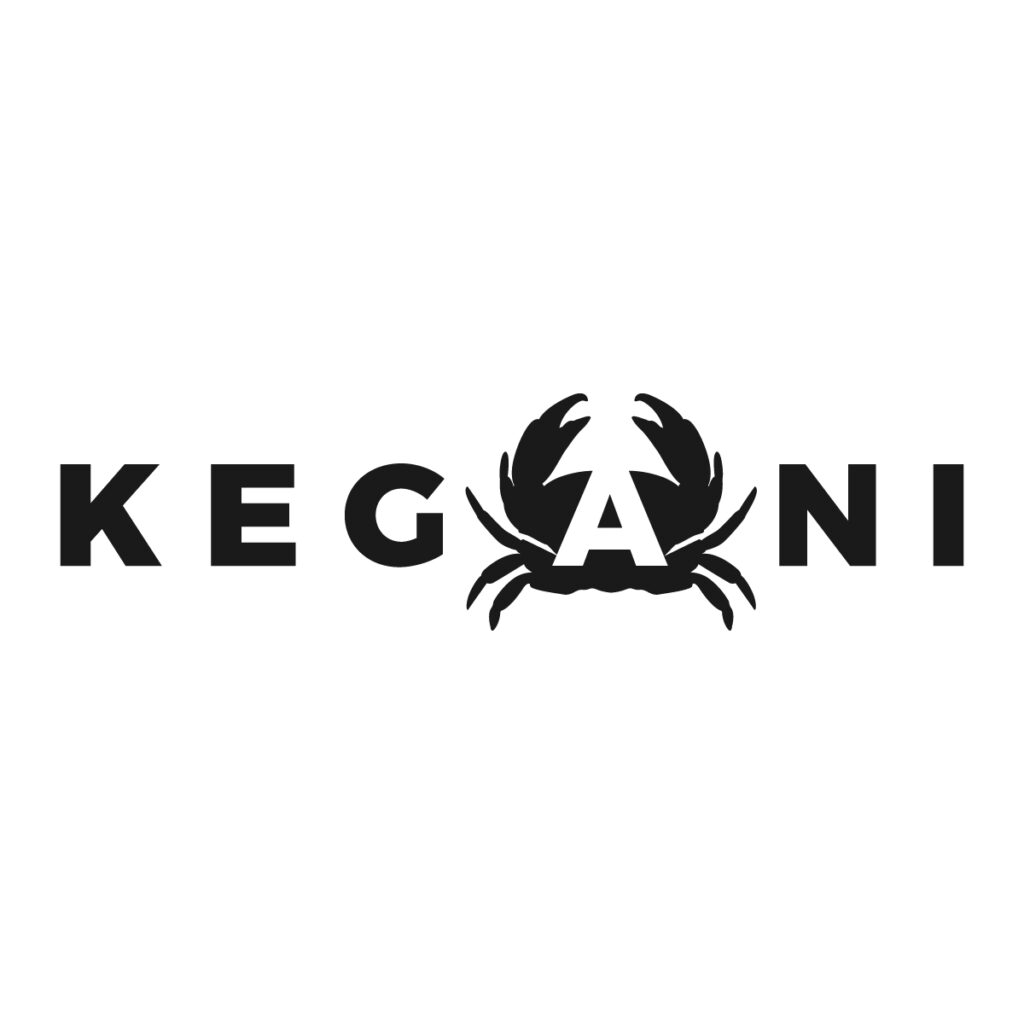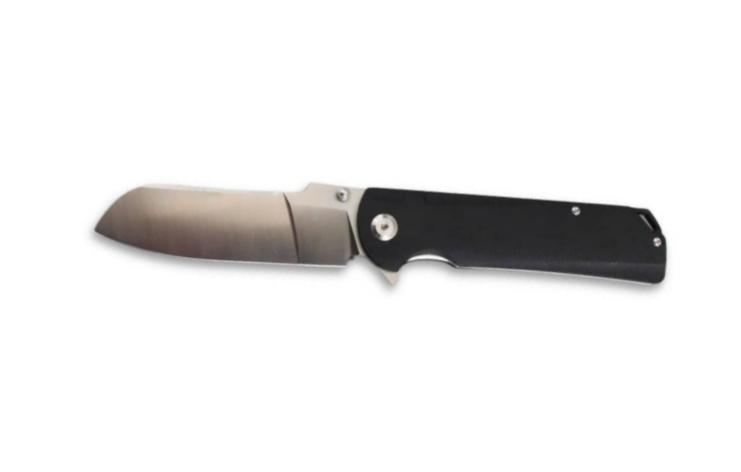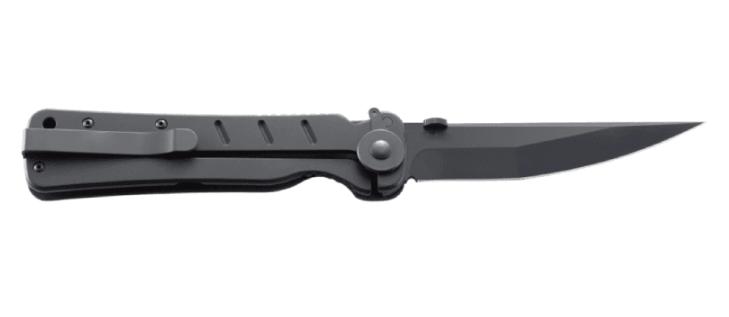Choosing between AUS-8 and D2 steel for your next product line isn’t just about comparing specs; it’s a strategic move that will define your product’s market position, target audience, and ultimately, your brand’s reputation.
As your OEM knife manufacturing partner, our goal is to guide you through this critical decision. This in-depth comparison will help you determine which steel aligns best with your business goals and customer expectations.
AUS-8 vs D2: steel overview

AUS-8
AUS-8 is a Japanese stainless steel developed by Aichi Steel Corporation (now part of the Toyota Group). It’s part of the AUS series (AUS-6, AUS-8, AUS-10), with the “8” indicating a mid-level carbon content. AUS-8 became popular in the 1990s and early 2000s as a reliable, affordable alternative to the 440C and other Western stainless steels.
It is valued for its balance of performance, affordability, and low maintenance. It’s a favorite for brands targeting casual users, home cooks, and outdoor enthusiasts who want a worry-free, rust-resistant blade.
D2
D2 is a high-carbon, high-chromium tool steel originally developed in the US for industrial stamping dies and cutting tools during World War II. It’s part of the “D” series of tool steels, known for their wear resistance and hardness.
It’s famous for its outstanding edge retention and hardness, making it a favorite for heavy-duty and tactical knives. However, D2 is considered “semi-stainless” and requires more care to prevent rust.
For a detailed comparison with other tool steels, see our 14C28N vs D2 Steel Comparison.
AUS-8 vs D2: composition comparison
A steel’s chemical makeup determines its real-world performance. Here’s how AUS-8 and D2 compare:
| Element | AUS-8 (%) | D2 (%) | Impact on Your Knife |
|---|---|---|---|
| Carbon (C) | 0.70-0.75 | 1.40-1.60 | Higher in D2: The core of hardness and edge retention. |
| Chromium (Cr) | 13.0-14.5 | 11.0-13.0 | Higher in AUS-8: Key to its superior rust resistance. |
| Molybdenum (Mo) | 0.10-0.30 | 0.70-1.20 | Boosts toughness and hardenability. |
| Vanadium (V) | 0.10-0.26 | 0.90-1.10 | Higher in D2: Forms hard carbides for extreme wear resistance. |
| Nickel (Ni) | ~0.49 | ~0.30 | Enhances toughness, especially in AUS-8. |
Why it matters:
AUS-8’s higher chromium and nickel give it the edge in rust resistance and toughness, making it more forgiving for everyday users.
D2’s high carbon and vanadium make it a champion for edge retention and wear resistance, but also make it harder to sharpen and more prone to chipping.
Start Working with a Professional Now
AUS-8 vs D2: performance breakdown
Corrosion resistance
AUS-8 (Rating: 7/10): With 13–14.5% chromium, AUS-8 forms a strong protective layer, making it highly resistant to rust—even in humid or coastal areas. This means less customer complaints about rust, fewer returns, and a better reputation for quality.
D2(Rating: 4/10): D2 has about 12% chromium, but much of it is tied up in carbides, so only 5–6% is “free” to fight corrosion. This means D2 knives need regular oiling and care, especially if your customers use them outdoors or in wet conditions. Consider offering blade coatings for extra protection.
Toughness
AUS-8 (Rating: 6/10): Thanks to its lower carbon content and the presence of nickel, AUS-8 is noticeably tougher than D2. This means it’s less likely to chip or break under stress, making it ideal for EDC and outdoor knives that might be used for prying, twisting, or other demanding tasks.
D2 (Rating: 3.5/10): D2’s high carbide content significantly boosts wear resistance and edge retention, but it also makes the steel more brittle. As a result, D2 is more prone to chipping or breaking if subjected to lateral force or impact, so it’s best suited for users who prioritize edge retention over toughness.
Hardness
AUS-8: Typically hardened to 58–59 HRC, which provides a good balance between toughness and edge retention. This moderate hardness makes it easy to sharpen and less likely to chip.
D2: Can be hardened up to 60–62 HRC, making it one of the hardest commonly used knife steels. This high hardness is a key reason for its superior edge retention, but it also means the blade is more brittle and harder to sharpen.
Edge retention & initial sharpness
AUS-8 (Rating: 3/10): AUS-8’s moderate carbon content means it holds an edge reasonably well for daily tasks, but will require more frequent sharpening during extended or heavy use. However, its toughness allows it to support a very acute 13° “razor” edge without immediate chipping, making it a champion of initial sharpness for slicing tasks—ideal for kitchen knives and precision EDC blades.
D2 (Rating: 5/10): D2’s high carbon and vanadium content create a large volume of hard carbides, which dramatically improve wear resistance and edge retention. This allows D2 knives to stay sharp 20–40% longer than AUS-8, making them ideal for heavy-duty, professional, or tactical applications. However, D2 is less suited for extremely acute edge angles, as it is more prone to chipping.
Ease of sharpening
AUS-8 (Rating: 8/10): The lower hardness and simpler carbide structure of AUS-8 make it very easy to sharpen, even with basic sharpening stones. This is convenient for users who prefer quick, hassle-free maintenance.
D2 (Rating: 4/10): The same hard carbides that give D2 its edge retention also make it more challenging to sharpen. D2 typically requires diamond stones or professional sharpening equipment, which can be a drawback for some users.
Here’s a quick side-by-side for the most important performance factors:
| Parameter | AUS-8 | D2 Steel |
|---|---|---|
| Corrosion Resistance | Excellent (true stainless, low maintenance) | Moderate (semi-stainless, needs regular care) |
| Hardness Range | 57–59 HRC | 55–62 HRC |
| Typical Working Hardness | 58–59 HRC | 60–61 HRC |
| Toughness | Higher – 6/10 | Lower – 3.5/10 |
| Edge Retention | Good – 3/10 | Excellent – 5/10 |
| Ease of Sharpening | Easy – quick to sharpen with basic stones | Difficult – requires more effort and better tools |
| Price/Value | More affordable, great for budget knives | Higher price, but strong value for performance |
| Heat Treatment Complexity | Moderate | High |
| Recommended Uses | EDC, kitchen, outdoor, beginner-friendly | Heavy-duty, hunting, industrial, tactical knives |
Start Working with a Professional Now
Price & value
| Price Range | AUS-8 Knives | D2 Knives |
|---|---|---|
| Entry Level | $25–45 | $50–70 |
| Mid-Range | $45–80 | $70–120 |
| High-End | $80–150 | $120–200+ |
Why it matters: AUS-8 is great for budget-friendly lines. D2 commands a higher price, but delivers premium performance.
If you’re interested in sourcing from top Chinese manufacturers, see our OEM Knife Manufacturer List and Private Label Knife Manufacturers Guide.
Heat treatment
- AUS-8: Easier to heat treat, making it reliable for mass production and consistent quality.
- Annealing: 850°C, slow cooling
- Quenching: 1050–1070°C, oil or air quench
- Tempering: 150–200°C, adjusted for desired hardness
- D2: Needs precise temperature control and expertise, which can affect cost and consistency.
- Preheating: 450°C → 850°C, staged
- Austenitizing: 1000–1030°C
- Quenching: Air cool to 150–125°C
- Tempering: Single or double tempering based on hardness needs
Why it matters: If you’re planning large-scale production, AUS-8 offers more consistent results and lower risk of heat treatment errors.
For more on how knives are made and the importance of heat treatment, see our Knife Manufacturing Guide.
AUS-8 vs D2: best use cases
AUS-8 is ideal for:
- EDC knives for everyday users
- Kitchen knives for home cooks
- Outdoor knives for campers and hikers
- Budget-friendly product lines
D2 is best for:
- Industrial cutting tools
- Heavy-duty knives for professionals
- Tactical and survival knives
- Precision tools needing long service life
Tip: If your target market values easy maintenance and rust resistance, AUS-8 is a safe bet. If they demand maximum edge retention and don’t mind a little extra care, D2 is the way to go.
Choosing the right steel
Both AUS-8 and D2 have their strengths. If you need a knife that’s corrosion-resistant, tough, and easy to maintain, AUS-8 is your best bet. If you want maximum edge retention and hardness—and are willing to invest in extra care—D2 is the way to go.
At keganico.com, we help Western knife brands and retailers find the perfect steel, manufacturer, and solution for their needs. Whether you’re looking for OEM, private label, or expert advice on steel selection, our team is ready to support your growth. Click here to Get a fast, professional quote.



